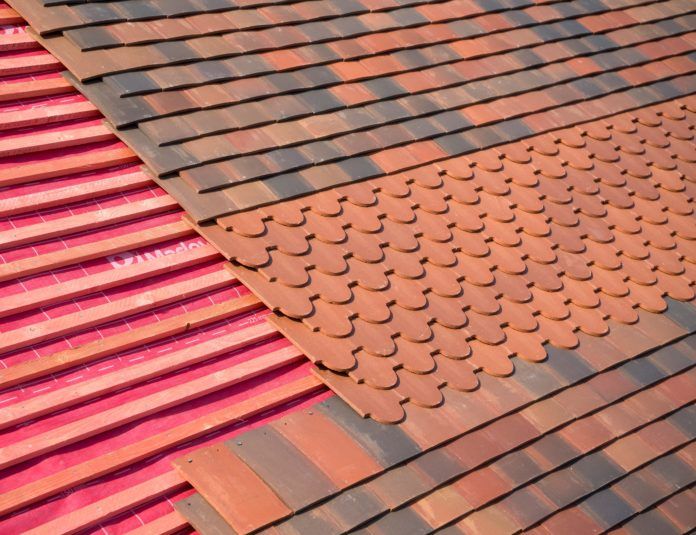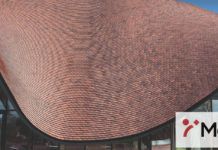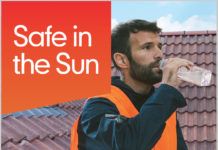Following the wettest February on record, Tom Woodhouse, sites services manager from Marley, gives his top tips below on preventing water ingress
February 2020 was a devastating reminder of just how volatile the weather is becoming, with three named storms – Dennis, Ciara and Jorge – hitting the UK in a matter of weeks, wreaking havoc with high winds, heavy rainfall and widespread flooding. In fact, this year saw the wettest February on record for the UK, and also the fifth wettest calendar month since 1862, with 209.1mm rainfall*.
Unsurprisingly, during this time, our technical team received a larger amount of calls than usual with concerns about water ingress, with the heavy rainfall exposing areas of the roof that might already have been vulnerable. When this type of roof leak, or water ingress, is discovered, the most common reasons are: an issue with the roof detailing, products not being fitted to manufacturer instruction, inferior or incompatible dry fix systems or a build-up of condensation caused by lack of ventilation.
Call backs to identify and repair these problems can be time consuming for contractors, so it’s important they have confidence that the pitched roofing products they are using will stand up to extreme weather. As we expect to see wetter winters in future due to continued climate change, what steps can contractors take to prevent roof leaks?
Marley’s top tips for preventing water ingress
1.BS 5534:2014+A2:2018 was introduced to help roofs be more secure against increasingly extreme weather, so always follow its recommendations for both new and refurbishment projects.
2. Get a free fixing specification from the tile manufacturer for each new project you do. This ensures you have the right specification for the level of exposure. You can quickly obtain free fixings specifications via the tool on our website, www.marley.co.uk/fixingspec, or by calling our technical team on 01283 722588.
3. When installing roofing products, always follow the manufacturer instructions. Products from different manufacturers may look similar, but there may be differences in the installation process, so it’s important to follow specific instructions and not make assumptions. Our free sitework guide and app gives easy to follow instructions for installing all of our products (https://apps.apple.com/gb/app/roofing-sitework-guide/id1076981595).
4. Use high quality dry fix systems and be aware there are differences between products. As well as using a BS 8612 compliant product, make sure you check compatibility and install all systems in accordance with manufacturer and BS 8612 recommendations.
5. Always install underlays to BS 5534:2014+A2:2018 requirements and seal the laps to prevent water ingress. Our Vapour Permeable and Non-Breathable membranes come with integrated tape to seal the laps to prevent ballooning, without the need for additional tapes.
6. Set out battens carefully in accordance with manufacturer instructions and BS 5534 guidelines, as any errors here can put stresses on other parts of the roof system.
7. When you’re choosing a ridge roll product, consider the size of the holes or methods used for ventilation. Our Ridge Roll has been designed with smaller holes to minimise the risk of water getting through, whilst still meeting the requirements of BS 5250.
8. When installing roof vents, make sure you fit the soaker tray above – this helps to prevent water getting through. Our tile vents come ready supplied with the soaker tray, not all products on the market do.
9. Ensure there is sufficient ventilation to prevent condensation build up. Always comply with BS 5250:2011+A1:2016 ‘Code of practice for control of condensation in buildings’ and BS 9250:2007 ‘Code of practice for design of the air tightness of ceilings in pitched roofs’. Don’t rely on breathable underlay as the only source of ventilation, as roofs will always require some form of supplementary low and high-level ventilation in accordance with BS 5250.
10. Save time on repairs and reduce risk by using a full roof system from one manufacturer, as this will guarantee compatibility and compliance. The Marley full roof system includes your choice of roof tiles or slates, as well as battens, underlay, dry fix, ventilation and fixings, backed up with a free 15-year warranty. As well as reducing the risk of roofing faults and protecting your reputation, it also means if your customer does notice a roof leak, or damage to any part of the roof, we will investigate the problem. This means you only have one supplier to deal with and removes the hassle for you and your customer.
*Figures from the Met Office




